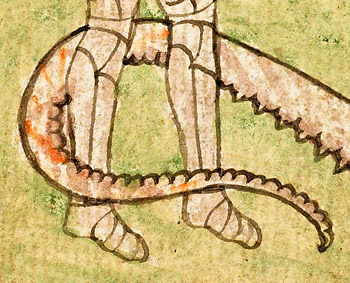Erle of Tolous
General Information
Plot Summary

Diocletian, the Emperor of Germany, unjustly takes lands from Sir Barnard, the Earl of Toulouse. His wife, Beulybon, begs him to return them, but he refuses. There is a bloody battle and, despite a huge number of deaths on each side, the Earl is victorious. The Emperor again ignores his wife’s pleas and vows vengeance. Meanwhile the Earl discusses Beulybon’s famed beauty with Sir Tryalbas, one of his prisoners. He releases the knight, who agrees to arrange for him to see the Empress. The pair travels to Diocletian’s city, where the Earl disguises himself as a hermit. Trylabas informs Beulybon that he has the Earl, and offers to kill him. She replies that he must not break his promise and tells him to bring the Earl to her chapel the next morning. Here Beulybon, richly clothed, allows the Earl, who is still dressed as a hermit, to gaze on her. As she leaves, he asks her for alms and she conceals her ring among the coins. Delighted, he returns home, resisting an attempted ambush by Trylabas.
Diocletian entrusts his wife to two knights. After swearing her to secrecy, they both proposition her, but are rejected and, fearing that she will tell her husband, plot her downfall. They persuade a young knight to hide in her chamber and they ‘discover’ and kill him. Beulybon is accused of adultery and imprisoned. Diocletian has a prophetic dream and returns home, where he is met by the traitors demanding that she be burned. A parliament is called, and an old knight suggests finding a champion to fight for Beulybon. News of this reaches the Earl and he decides to accept the challenge, but first to determine that she is innocent. He accompanies a merchant to Germany and they lodge at an abbey. The Abbot, who is Beulybon’s uncle, professes her honesty: he is her confessor and she is guilty of nothing but giving the Earl her ring. Swearing him to secrecy, the Earl reveals his identity. On the day of the execution, he dresses in a monk’s habit and himself acts as Beulybon’s confessor. Satisfied of her innocence, he defeats the two traitors, makes them admit their guilt, and has them burned on the Empress’ pyre. Diocletian searches for the monk, but the Abbot will not fetch him until the Emperor swears to be his friend no matter what. He agrees, and the Earl is produced. Having embraced him, the Emperor returns his lands and makes him his steward. When Diocletian dies, three years later, the Earl is elected Emperor. He marries Beulybon and they live together for twenty three years and have fifteen children.
From: Jennifer Fellows, Of Love and Chivalry: An Anthology of Middle English Romance. London: J.M. Dent for Everyman, 1993.
Manuscript: Cambridge, Cambridge University Library, Ms F.f.2.38
Manuscripts
Click a title below to search for all romances in that manuscript.